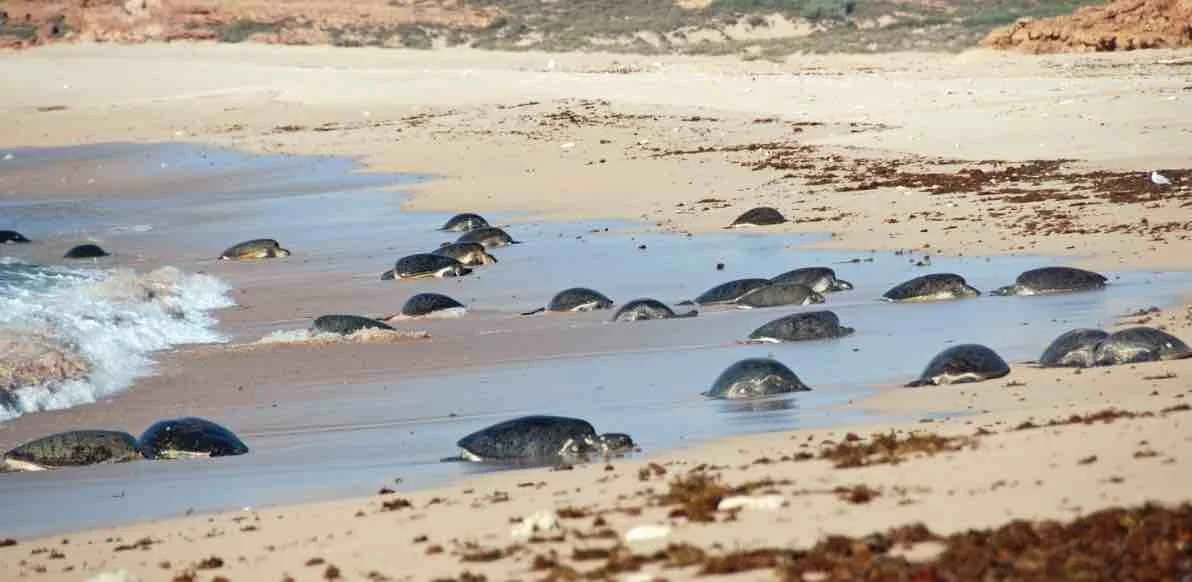Despite the collateral damage they do, Peruvian small-scale fisheries form the backbone of Peru’s fishing sector and are the main source of income for more than 200,000 coastal families. Enter ProDelphinus, a Peruvian not-for-profit organization that is using real-time, two-way radio communication with fishermen at sea to help reduce the incidental capture of marine fauna and to promote long-term fishery sustainability.
Read MoreBecause nesting female turtles—and their hatchlings—are so readily available to humans for study, they have been the focus of monitoring and conservation projects worldwide for decades. But with virtually no information about males, our understanding of how sea turtle populations really work is severely limited. Here’s where the sea turtle detectives come in.
Read MoreSea turtles do not recognize political boundaries, nor do they have regard for Exclusive Economic Zones (EEZs), cooperative agreements, international conventions, or memoranda of understanding between countries. In the Southwest Indian Ocean, these elements come into play in ways that drastically affect the lives of important green and loggerhead sea turtle populations.
Read MoreLike most sea turtle monitoring projects around the world, sea turtle work in Mexico’s Yucatán peninsula has focused on nesting beach surveillance since the end of the 1970s and has paid very little attention to the basic in-water biology and ecology of sea turtles. Today, new satellite telemetry research is revealing new insights about the migration and foraging patterns of turtles.
Read MoreIn the Pacific Ocean, leatherback turtles routinely make epic journeys of tens of thousands of miles between tropical breeding areas and frigid-water feeding areas. A newly completed, multiyear satellite tracking study provides the best picture yet of the jaw-dropping migratory abilities of these animals.
Read MoreThreats to the oceans are also particularly threatening to the way of life for Pacific Islanders; indeed, the changes jeopardize the very existence of some Pacific Island nations. Addressing the extensive threats to the health of the Pacific Ocean and of those who depend upon it most directly requires immediate, collective, and concerted action at a large scale.
Read MoreThanks to the tireless work of a group of passionate conservationists, the government of Uruguay recently declared Cerro Verde and La Coronilla Islands a Coastal-Marine Protected Area. Although the work is far from over, thanks to the groundwork laid by Karumbé over the prior 12 years, the forthcoming management plan will be well informed, and the protected area will benefit from strong participation by local communities.
Read MoreWhat’s the connection between marine turtle grants and postage stamps? In this time of increased need for support of sea turtle conservation, Americans can now easily help turtles and many other much-loved species … by simply buying a postage stamp.
Read MoreThe following list was published in The State of the World's Sea Turtles Report Vol. 7 in 2012 and identifies the 11 most threatened sea turtle populations in the world. This analysis was made possible by the priority-setting efforts of the Burning Issues (BI) Working Group of the IUCN Marine Turtle Specialist Group, which created a framework for delineating sea turtle populations globally (RMU's) and then evaluated, compared, and organized sea turtle RMU's within the context of a conservation "priorities portfolio".
Read MoreTo succeed, sea turtle conservationists must view our goals at the global, as well as local, scales. We must recognize the relative threat and risk factors that influence our decisions, and we must have our eyes open to both present and future priorities simultaneously.
Read More









